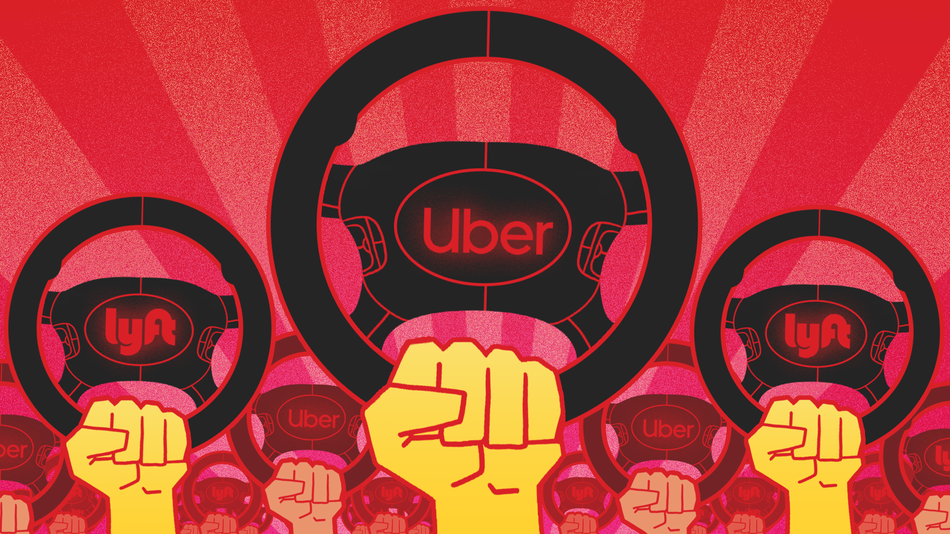

Share
Uber has been a tech darling since it began “disrupting” the taxi industry eventually embodying the excitement and exploitation of the gig economy. As Uber lurches toward its much anticipated initial public offering (IPO) on the New York Stock Exchange Wednesday, a movement to #StrikeUber has captured the attention of thousands over social media.

While the Uber IPO has Wall Street salivating, drivers will be squeezed. Workers are likely to see their pay decline as the pressures of being a publicly held company demand higher profits. A variety of analysts argued that driver incentives, like higher pay for working during “surge pricing,” could be on the chopping block. In contrast, significant shareholders stand to make tens of millions of dollars including; the government of Saudi Arabia, Travis Kalanick, the company’s co-founder and ex-CEO, venture capitalist Matt Cohler, .
In their prospectus, Uber admits drivers are not happy indicating that, “We expect driver dissatisfaction will generally increase.”
Uber’s business model depends on classifying drivers as contractors to avoid legal protections around wages and overtime. To further prevent attempts to classify drivers as employees, Uber is investing heavily in autonomous driver technologies or self driving cars that would replace the need for humans.
As the Uber and Lyft strike evolved throughout the day, the Democracy at Work Institute commented that,
“As workers and riders unite to #StrikeUberLyft, we’re asking: What would it look like for workers to #OwnTheseJobs? The taxi industry has seen significant success using the #workercoop model to protect wages and job quality.”
A 2015 report from the Democracy at Work Institute explains that the taxi industry is changing.
“Hundreds of new worker-owners have come together in just a handful of companies over the last 10 years, which outpaces the growth of cooperative worker ownership in many other industries.”
Taxi worker cooperatives have launched throughout the country. Founded in 2012, in Portland, Oregon, the cooperative Union Taxi, immediatley improved conditions for taxi drivers. According to Northwest Labor Press, Union Taxi’s driver-owners saw significant wage increases within a year of formation.
Other successful taxi cooperatives include Union Cab in Madison, Wisconsin, Coop Taxi in Montreal, Canada, and COOP Taxi in Seoul, South Korea. Formed in 2014, the 800-person Denver based Green Taxi Co-op is a worker-cooperative, every driver is also a partial owner of the company.
Local municipalities are beginning to support worker cooperatives. Recently $1.2 million in New York City Council funding was approved to support local worker cooperatives. Last month, the City of Madison, Wisconsin passed a plan to provide $1 million per year in support of local worker cooperatives for five years. The City of Minneapolis is offering an initiative to provide training for those interested in starting worker cooperatives and technical assistance for existing worker Co-ops.
Private funders are also supporting cooperative development.
 Just yesterday the Independent Drivers’ Guild (IDG) received $25,000 through the Capital Impact Partners’ Co-op Innovation Award to launch a purchasing cooperative that will reduce expenses for drivers including fuel, car washes, oil changes, dash cameras, meals-on-the-go, and car repair. Culturally appropriate meals-on-the-go will be provided by the Drivers Cooperative Café, a worker cooperative that IDG is in the process of establishing.
Just yesterday the Independent Drivers’ Guild (IDG) received $25,000 through the Capital Impact Partners’ Co-op Innovation Award to launch a purchasing cooperative that will reduce expenses for drivers including fuel, car washes, oil changes, dash cameras, meals-on-the-go, and car repair. Culturally appropriate meals-on-the-go will be provided by the Drivers Cooperative Café, a worker cooperative that IDG is in the process of establishing.
Building on this first step toward a purchasing co-op, IDG envisions eventually creating a rideshare app to help its drivers compete in the New York City market. The guild represents more than 85,000 for-hire vehicle drivers in New York City, 90 percent of whom are immigrant workers. For these low-wage drivers, these cooperatives are a means of finding more financial stability in a highly competitive industry by providing more take-home pay.
“We are honored to work with Capital Impact Partners and The Workers Lab to pioneer a new union-cooperative strategy to turn the gig economy into a launching pad for the new economy. In the for-hire vehicle industry, workers spend around half of their income on the tools that they need to do their jobs. Developing worker and consumer cooperatives to source these key inputs have the potential to elevate the earnings and transform the lives of thousands of immigrant workers and workers of color in New York City, and eventually around the world,” said Erik Forman, Education Director at Independent Drivers Guild-IAMAW.
In the Uber and Lyft model subcontracted workers actually provide the capital: cars, auto insurance and cash, but are not making a profit. Instead almost half of a driver’s earnings are lost to Uber (after the commission and booking fee). Seth Ackerman writing in Jacobin argues that the most straightforward way for Uber to become a workers cooperative, “would be for cities to adopt regulatory codes that only permit ride-sharing by worker-owned firms. Uber would then seamlessly become a software provider.”

